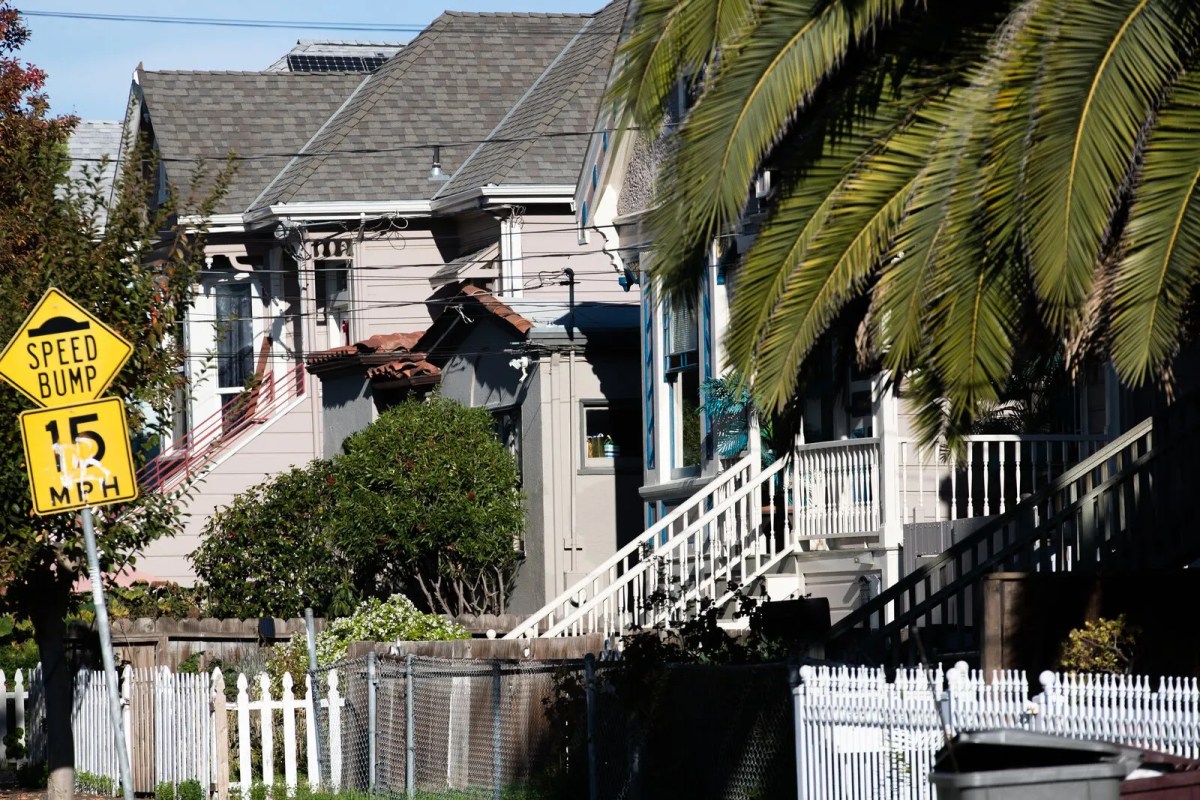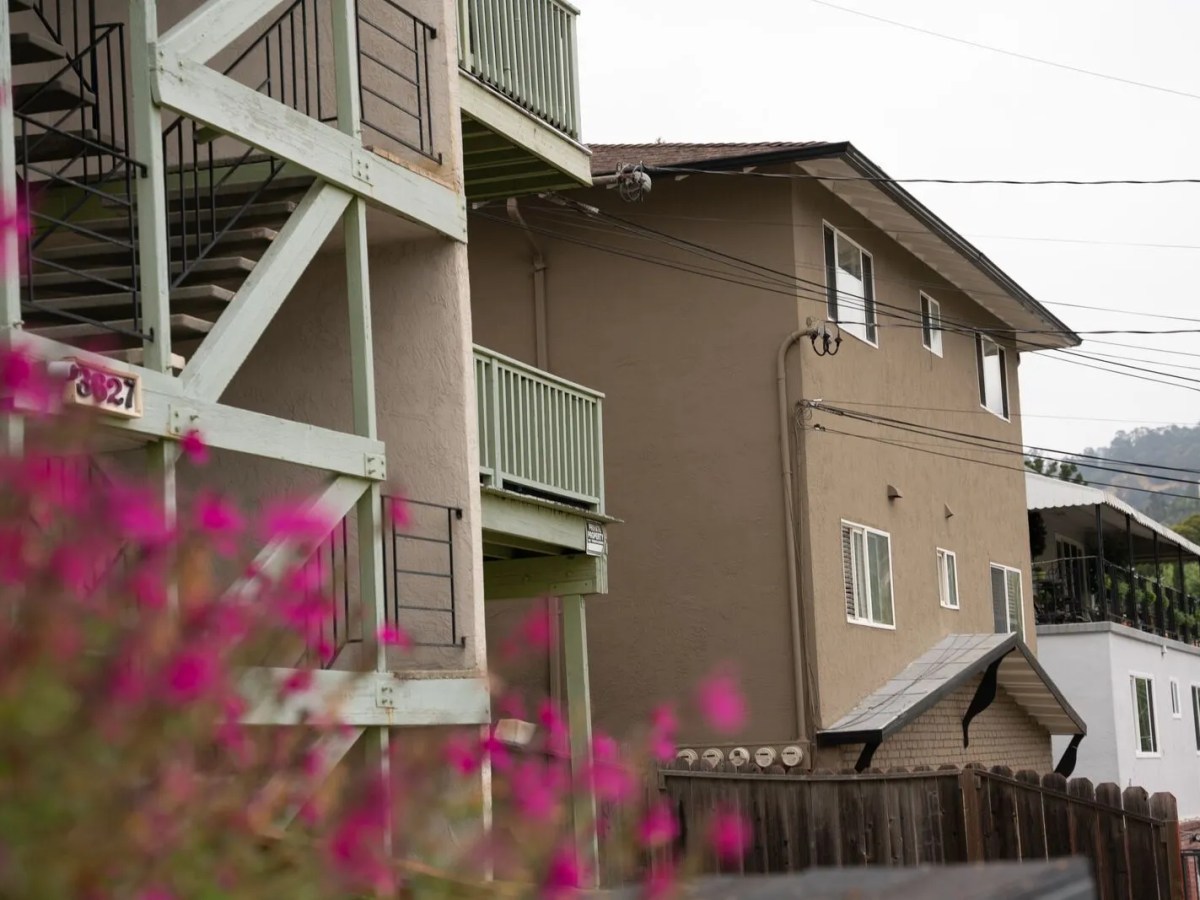Renters in the Jack London District, Rockridge, and Temescal are paying the highest prices for their houses and apartments out of all tenants in Oakland, new data from the city reveals.
In Fruitvale and other parts of East Oakland, monthly rents are lower than anywhere else. But renters in those neighborhoods tend to spend more of their incomes on housing than tenants in the pricier places.
This story is the second in a series on what we can learn about Oakland housing from the city’s rent registry.
Launched last year, Oakland’s rental registry collects information from property owners on rent prices and building specs for almost every rental home in the city. The registry is meant to be a regulation tool, ensuring landlords comply with Oakland’s rent control law, and making it easier for the city to communicate with both landlords and tenants.
The database also helps answer questions that were previously left to speculation or educated guesses—namely how much housing actually costs in Oakland. Earlier this month, we examined the average rental prices Oakland tenants pay for their homes—from studio apartments to houses with five or more bedrooms.
But rental prices vary a lot from neighborhood to neighborhood. In some cases, this is because the types of rental homes are different between two locations. Some neighborhoods have mostly single-family homes for rent while others have mostly studio and one-bedroom apartments. But in many cases there are disparities even when you compare identical types of units located in different parts of the city, like three-bedroom houses in Eastlake and Eastmont.
For this second installment of our series delving into rent registry data, we took a look at how rental prices vary depending on what part of the city you’re looking at. To do this, we compared the median rents that tenants are currently paying in each ZIP code. And to gain an even more precise understanding of how rents vary from neighborhood to neighborhood, we narrowed down our focus to one-bedroom apartments to see what renters are paying for similar units in each ZIP code.
Note that the rent registry, despite offering more detail than ever before for over 43,000 homes, is not complete or comprehensive. Tens of thousands of units have yet to be registered, according to the city. And the database excludes all housing built in the past 10 years, some of the priciest and largest buildings in the city. Median rents would undoubtedly be higher if these apartments were included.
The database also reflects currently occupied housing, not units available on the market, which tend to be more expensive because landlords can set new rents at whatever level they’d like. In our last story, we looked at what longer-term tenants who’ve benefited from rent control are paying compared to tenants who just signed a new lease at market rates.
Oakland’s most expensive and least expensive neighborhoods
Looking at all housing included in the database, the 94601 ZIP code (Fruitvale) has the least expensive rents, followed by 94612 (downtown and Uptown) and 94606 (Eastlake and San Antonio).
On the other end of the spectrum, 94705, the Claremont hills where some homes have addresses in both Berkeley and Oakland, is the priciest. However, there aren’t many rental houses or apartments in this part of the city, according to the rent registry. The next most expensive neighborhood is 94618 (Rockridge), followed by 94607 (West Oakland, Chinatown, and Jack London). While this area also includes a lot of low-cost housing, the Jack London District is home to numerous large high-end apartment buildings that appear to move this ZIP code up in the rankings.
The inclusion of downtown Oakland at the bottom of the price list might surprise some residents. The area is not generally thought to be the cheapest place to live in the city. But some of the lower-cost areas, like deep East Oakland, mainly offer single-family homes for rent, which are generally more expensive because they have more bedrooms and aren’t covered by Oakland’s rent control law. Downtown, on the other hand, is filled with small apartments, many of them subject to rent control.
To compare apples to apples—or homes to homes—we also looked at the cost of renting a one-bedroom in each ZIP code.
The very most and least expensive ZIP codes retain their spots in the one-bedroom rankings. But some other spots shift. The second least expensive ZIP code for one-bedroom rentals is 94621 (around the Coliseum and the Oakland airport) and third is 94603 (deep East Oakland, up to the San Leandro border). This differs from the ranking for all the units, where downtown, Eastlake, and Dimond all come in at a lower cost.
Neighborhoods with the cheapest rents may not be the most affordable places to live
The federal and local governments consider any household that’s spending more than 30% of its income on rent to be “rent-burdened”—paying more than they can afford on housing.
Using this measure, renters need to make at least $61,800 a year to afford the median home in the cheapest neighborhood to rent in Oakland—Fruitvale. But the median renter household income in that ZIP code is only $48,919, according to the U.S. Census. So the sheer cost of rental housing may be lowest in Fruitvale, but renters there are struggling to afford their homes.
By comparison, take one of Oakland’s priciest neighborhoods, Rockridge. While you need to make much more money—$87,600—to afford the median rent there, the median renter household income is well above that at $147,500.
The median figures also don’t reflect the different realities for different racial and age groups, said Tim Thomas, research director at UC Berkeley’s Urban Displacement Project.
“White and Asian households tend to be making more, and Black and Latine households are making less,” Thomas said. With even the median Fruitvale renter unable to afford the median home there, groups that historically make less money are especially strapped.
“This is basically telling me the doom story of, there are very few places that vulnerable households can move to,” said Thomas. In the few remaining affordable spots, “you increase demand in those spaces, which exacerbates displacement risk.”
It will only get tougher for low-income households, he said. While the COVID-19 pandemic prompted rents in Oakland to drop some, and then climb at a slower rate, “history tells us this is a little bit of a plateau,” Thomas said. “Decline isn’t really a thing we see too much,” and wages aren’t rising at nearly the same pace as rents.
But some Oakland landlords contacted us after the first story in this series, arguing that recent changes to the city’s tenant laws have forced rents to stay lower than they would be otherwise. The City Council in 2022 passed a 3% cap on annual rent increases, and the city had one of the longest-lasting moratoriums on evictions, which prohibited landlords from kicking out tenants who didn’t pay rent. When tenancies turn over, and landlords can set a new rent price, they’ll go as high as they can to make up for lost income, said some people who wrote to The Oaklandside.
For this story, we reached out to several companies that own or manage multiple rental properties across different ZIP codes in Oakland, to hear about how they decide what to charge in different locations, but we didn’t hear back from any.
Stay tuned for more reporting on what we can learn from the rent registry.


